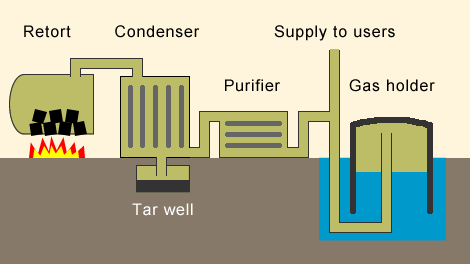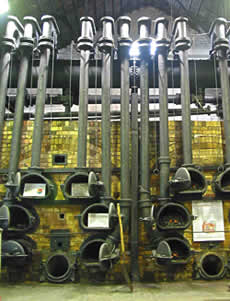Making gas from coal
The basic process for making gas from coal used in the early 19th century remained essentially unchanged right through until the last coal gas works closed in the 1970s. Coal in a closed tube called a retort was heated in a furnace. The gasses given off – mainly hydrogen and carbon monoxide – passed through a water trap (“hydraulic main”) and were then cooled in a condenser, where tar and some other liquids were removed. The gas then passed through a purifier to remove sulphur compounds and other impurities before being used or stored in a gas holder. Later in the 19th century, steam driven exhausters were introduced to pump the gas through the gas works and into the mains system.
These retorts had to be filled with coal (“charged”) and emptied by hand, which was hot, back-breaking work. Later in the 19th century, mechanical charging and vertical or inclined retorts were introduced in the larger gas works but hand-charging of horizontal retorts continued at small town gas works until they closed in the 1960s.

